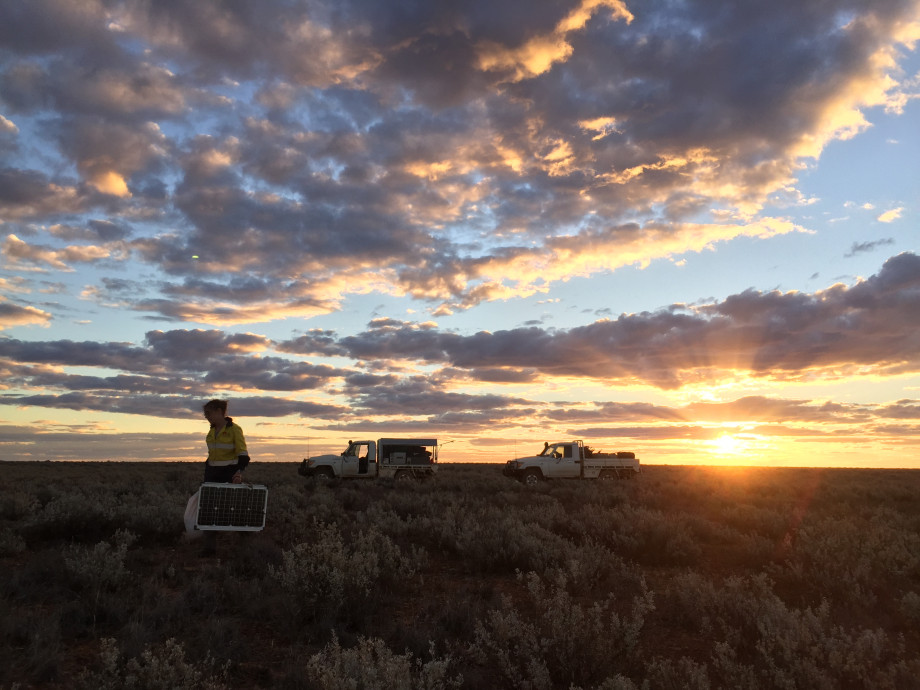THE CHALLENGE
Australian Geophysicists are mapping the possible location of economic mineral deposits in South Australia and relying on the NCI to produce advanced 3D models of the subsurface. The great challenge of this work is that over 80% of the surface of the state is covered by younger sediment, such as vast fields of sand dunes, which conceal the potentially mineral-rich rocks below. Therefore, techniques that can ‘see’ through this cover are required to find new deposits of critical commodities like copper, rare earth elements, vanadium and many others, which are vital for society’s ongoing transition to a renewable economy.
More reliable modelling of the potential locations of mineral deposits could have great benefits in the efficiency of mining practices and in dramatically reducing the environmental impact of extracting resources from the earth.
One such technique is magnetotellurics (MT) which allows lithospheric imaging from a few metres to hundreds of kilometres from surface measurements. MT uncovers the imprints of past and present movement of fluid and magma and may indicate deep signatures of mineral deposits.
The AuScope enabled Australian Lithospheric Architecture Magnetotelluric Project (AusLAMP) aims to map the entire mineral system of Australia’s 250km deep lithosphere at a 50km surface scale intervals.
Dr Kate Robertson in the field setting up equipment for magnetotelluric imaging.
Computational power is now at the point that 3D inversions of magnetotelluric (MT) data are standard. What previously might have taken months can now be done in a matter of weeks.
HPC can be used to challenge assumptions about MT data, and more rigorous testing of 3D inversions will help to challenge geological interpretations based on these 3D models.
These are non-unique problems. A range of MT models could be showing the same answer, but the assumptions made in creating each of the models is quite different.
Dr Kate Robertson of the Geological Survey of South Australia and the University of Adelaide is hoping to highlight the assumptions being made when selecting one model, when hundreds if not thousands of models could actually fit the data.
“It is super critical to have NCI - there is no way we could do it on our own,” says Dr Robertson.
This is not to say that there is a flaw in the current methodology, but to say that there are caveats in the selection and application of one model over another. Dr Robertson says she hopes this work motivates improvements in future 3D codes, and that her work makes it easier and less time-consuming for others doing MT inversions in the future.
THE SOLUTION
Dr Robertson and her team ran 70 inversions taking huge time and effort – each running on 48 processors for ten days on NCI’s supercomputer. Dr Robertson's team ran these tests on 3D inversions on behalf of those who do not have the compute time available to them, in order to streamline compute models for the future.
Surprisingly, changing the resistivity of the starting model had a great impact on the end model.
NCI staff have supported the optimisation of the ModEM3DMT code for use on Raijin, and now Gadi. High-performance computing makes it possible to get the best inversion data from the raw data.
Dr Robertson and her colleagues present recommendations for modelling MT arrays using the inversion code ModEM3D. This information should serve to focus the inversions and parameter testing required and reduce the time and computational demand.
NCI also currently stores all the South Australian data and this is publicly available, and moving forward it is hoped that all MT data for Australia will be stored at NCI.
NCI is proud to support the combination of a refined approach to MT inversions with highly accessible data that could shape an exciting future through provision of high-performance computing and data.
THE FUTURE
Dr Robertson’s investigation will further our knowledge and allow for review of other datasets. As more efficiency is found in compute of 3D MT inversions, there is great potential impact on the mining industry in South Australia and beyond.
Improvements in computational efficiencies in MT inversions will impact the future of AusLAMP. This project has been going for six years already and is only a third of the way through, meaning there is around a decade of data collection and processing still to come.
Dr Robertson was recently in New York working on new code and testing a new tool with the aim to bring it to NCI and further improve MT on HPC in Australia.
She says, “It is great to have access to NCI staff to improve access to MT data, and what we can do with it.”
NCI will continue to support the use of HPC for MT data, with an increasing focus on 3D inversions, and facilitate high-quality MT research that will enable mapping of the underground mineral systems of the entire Australian continent.
Read more here.
